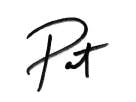The more I learn about lean, the more I think many -- if not most -- lean practitioners are missing the point.
Lean is not the tools and practices, and it's not even as much about understanding the usual "why" of implementing lean -- to eliminate waste, to continuously improve -- though that will help build a more sustainable lean system.
Rather, what we are really doing when we're "doing" lean is problem-solving. Lean is, at its core, a systematic approach to problem-solving. It's the scientific method applied to business.
Think about it: A lean practitioner identifies a "problem," applies various techniques to fully understand the problem, hypothesizes about its cause and possible "solutions," conducts an experiment, reviews the results, and repeats.
It's this problem-solving discipline that is the real point of lean.
I don't pretend to be the first to make this observation. However, I think that too often this idea gets buried amidst talk about tools, practices and philosophy. And I think defining lean as a systematic approach to problem-solving might help everyone's understanding of, and ability to implement, lean business practices -- and maybe even invent their own.
Lean is, at its core, a systematic approach to problem-solving.
This realization came to me when I reread "The Machine that Changed the World," with its detailed recounting of Toyota's approach to creating a business that could compete in the lucrative auto manufacturing arena. Chapter 3 describes a series of challenges, how those challenges are addressed through a series of experiments, and then how new challenges cropped up as a result, and so on.
Central to "lean as systematized problem solving" is that everyone is a problem-solver, especially those closest to the problem being solved -- and not just those traditionally considered "smart." This aspect of lean, one of the early discoveries of Taiichi Ohno, the man credited with "inventing" the Toyota Production System, is a big part of lean's genius.
Early on, Ohno discovered, through experimentation, that his new approach to production would require a new type of worker and, therefore, a new approach to managing the workforce. To solve this "problem," he began to experiment with involving workers in improving how they carried out their assigned operations. Step-by-step, experiment-by-experiment, Ohno created many of the practices that we now call lean. But what he was doing was teaching the workers how to solve problems and conduct experiments themselves, by using a well-defined approach.
It's important to note that many of the practices we now call lean are simply useful ways to teach the underlying point of lean. For example, as far as I can tell, Toyota leadership never called their production system "lean," nor did they use the term "kaizen event" or use value-stream mapping the way many lean practitioners in the U.S. use it. These constructs were coined or invented as a means to communicate -- and help others to replicate -- Toyota's unique approach.
I think this fundamental misunderstanding -- mistaking the learning tools and practices for learning the lesson -- may be the reason so many lean initiatives fail. If the point of lean is to embed a systematized approach to problem-solving, learning the tools of problem-solving can help, but it's not enough.
Business leaders' challenge in the next phase of our collective lean journey is to leverage the lean tools and practices toward building a company of problem-solvers.
About the Author
Patricia Panchak
Patricia Panchak, Former Editor-in-Chief
Focus: Competitiveness & Public Policy
Call: 216-931-9252
Follow on Twitter: @PPanchakIW
In her commentary and reporting for IndustryWeek, Editor-in-Chief Patricia Panchak covers world-class manufacturing industry strategies, best practices and public policy issues that affect manufacturers’ competitiveness. She delivers news and analysis—and reports the trends--in tax, trade and labor policy; federal, state and local government agencies and programs; and judicial, executive and legislative actions. As well, she shares case studies about how manufacturing executives can capitalize on the latest best practices to cut costs, boost productivity and increase profits.
As editor, she directs the strategic development of all IW editorial products, including the magazine, IndustryWeek.com, research and information products, and executive conferences.
An award-winning editor, Panchak received the 2004 Jesse H. Neal Business Journalism Award for Signed Commentary and helped her staff earn the 2004 Neal Award for Subject-Related Series. She also has earned the American Business Media’s Midwest Award for Editorial Courage and Integrity.
Patricia holds bachelor’s degrees in Journalism and English from Bowling Green State University and a master’s degree in Journalism from Ohio University’s E.W. Scripps School of Journalism. She lives in Cleveland Hts., Ohio, with her family.

